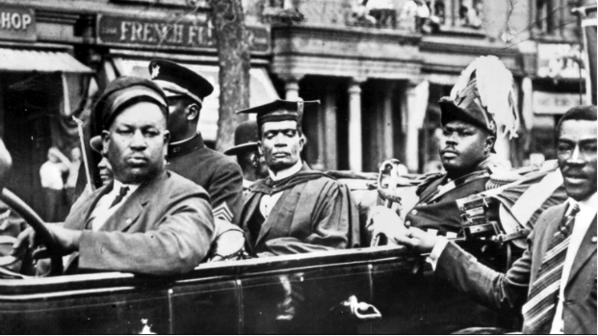
Was Jamaican national hero Marcus Garvey’s vision for Africa that of implanting a Western world view onto the continent and its Diasporas for which he passionately advocated?
The question arises after listening to the 2014 Elsa Goveia Memorial lecture presented (Thursday, Nov 6) by retired professor Robert Hill, at the Cave Hill, Barbados campus of the University of the West Indies (UWI) where the academic compared Garvey’s words and actions to the “fallen angel” status he was ascribed in the imagination of many of his early 20th century and later followers.
If that is negative criticism, such a view may suggest that culture is static and that places like Japan, China and India have sold their culture out to imitate other world views.
Garvey was given magical and mystical powers by some followers and many in the Rastafari movement that it is said flowed from a “prophecy” of Garvey’s ‘to look to Africa’ where a black king would be crowned, signaling black redemption was at hand. This was interpreted as the coronation of Ras Tafari Makonnen as Haile Selassie I, in 1930 as King of kings in Ethiopia, who was subsequently deified by some in Jamaica as the incarnation of Jesus Christ.
But Garvey’s utterances and actions—building a modern state and economy in Africa, with merchant and military marines and other social, educational and economic institutions able to inspire Africans “at home and abroad”, while dismissing the mysticism of Sub-Saharan Africa as uncivilized—seemed to reflect an allegiance to a Western world view.
It’s a difficult topic to write about because while some Africanists—meaning those focused on Sub-Saharan Africa—present the mysticism of the region as religion, others shun the description, preferring to use the term “way of life”. While among the Rastafari some adherents are staunchly religious and even use the language of the Christian church, others just as vocally say theirs is a way of life and not a religion.
Theologians and religionists may agree with the “way of life” description as there is no ‘head Rasta’ and no esoteric inductions to become identified with the movement.
Garvey was born in St Ann parish, Jamaica, in 1887, a mere 27 years after a revivalist explosion that resulted in the emergence of two main strains of magical/mystical expressions (labeled Kumina and Pocomania) that syncretized elements of bible stories and African mystical/magical practices.
It was also just 49 years after the formal abolition of black enslavement in the British Caribbean, where Jamaica was a shining example of the cruelty that remained.
It was also the time when theories of racial superiority of Caucasians and the lower animal status of Sub-Saharan Africans were being elevated to science and the continent was being divided up by European powers.
Garvey toured the Caribbean and Central America seeing firsthand the exploitation of blacks, from the cane fields of the islands to the disease filled camps of laborers in the Panama Canal zone.
He settled in the USA in the 1910s from where he launched the Universal Negro Improvement Association and other affiliated organizations to ameliorate the conditions of the people he had encountered.
His speeches and flamboyant style of dress in paramilitary regalia with marching “armies” and bands inspired a worldwide movement and at its peak, the membership surpassed a million.
He sought to build trade with Africa as the hub through the formation of a Black Star Line steam ship company to move cargo and people but was sold old junkets which were also seen to be sabotaged. Eventually at the height of his influence in the USA he was indicted on mail fraud charges, found guilty, imprisoned and then deported to Jamaica.
Back in Jamaica he tried to build a political movement around his People’s Political Party and the UNIA but he never gained the support of the more well off blacks and browns that was needed to gain traction in the days before universal adult suffrage in 1944.
But he achieved the distinction among his mass following of being elevated to a pantheon. Those influenced by Revivalism ascribed magical powers to Garvey, who Hill said described their champion as a fallen angel, one of the many gleaned from the Bible alongside West African spirit beings. Among the fallen angels there are both good and bad attributes to be used as needed without value judgment.
Within some Rastafari groups, Garvey was elevated either to prophethood as the modern day Moses or by to the Boboshanti sect as part of the godhead with Haile Selassie. Rastas almost universally eschew the “iniquity workers” of Revivalist sects.
But just like their Revivalist compeers have ignored Garvey’s condemnation of their world view, Rasta generally ignores his condemnation of Selassie as a coward when he fled Ethiopia for exile in England, after Benito Mussolini’s Italian invasion of 1935, to colonize Ethiopia under the European plan to share up Africa.
Revivalism and Rastafari remain powerful influences in Jamaica’s culture and their symbols are manipulated by politicians for electoral advantage. In 1972, Michael Manley of the left leaning People’s National Party (PNP) won on a campaign that featured a “rod of correction” said to have been given to him by Haile Selassie coupled with Rasta influenced reggae music.
In 1980, conservative Edward Seaga, an anthropological scholar of Revivalism, who based his Jamaica Labour Party (JLP) campaign on “deliverance” from the socialist evil, on attaining power immediately supplanted the then dominant reggae on the air waves with Pocomania influenced rhythms that remain dominant in dance hall culture.
Both parties acknowledge Garvey as the country’s foremost national hero despite having their own founders in that pantheon.
Garvey died a confirmed Roman Catholic, disillusioned, and alone in 1940 in England, where he had gone after rejection in elections and being hounded socially and legally. His embalmed body was exhumed and returned to Jamaica for burial there by the JLP under Seaga’s influence as social affairs minister in 1964, when Garvey was made the first national hero, two years after Jamaica had gained independence from Britain.
Whatever his legacy in the imagination of his proponents, the hero, angel, prophet and god figure is being again brought down to earth and humanized by the retired academic.


About Mark Lee
Mark Lee has been a long-time journalist writing, editing and producing in print, radio television and new media.



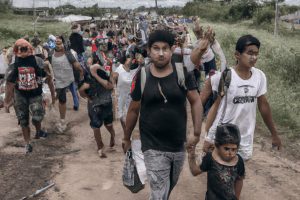




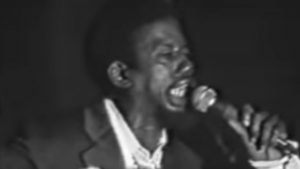
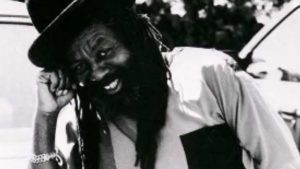
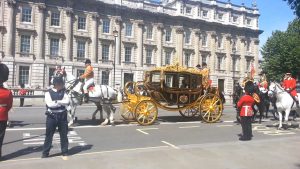
[…] retired professor, Robert Hill, while delivering the Elsa Goveia Memorial Lecture at the Cave Hill Barbados campus of the University of the West Indies a week earlier in Barbados […]